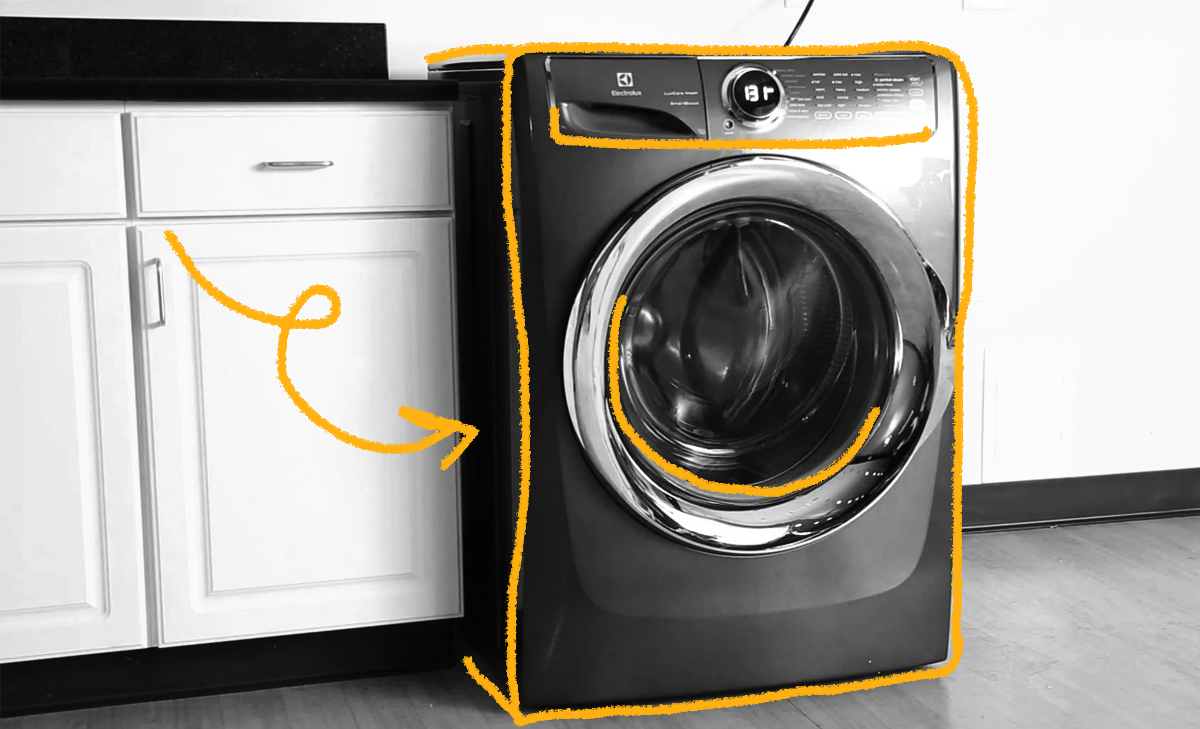Washing Clothes Before Machines
Before washing machines, doing laundry was a day-long affair. Washing was often done at a riverside and clothing would have to be vigorously rubbed against rocks or a washboard. If washing clothing at the water source was not possible, multiple trips would have to be made to carry water from the river to a large basin in the home instead. The arduous task of washing clothing would typically be undertaken by women, servants, and sometimes soldiers. Laundry was done this way for thousands of years.
Manual Washing Machines
In 1797, the first washing machine patent was awarded to Nathaniel Briggs, a resident of New Hampshire. Amos Larcom of Watervliet, New York, received another washing machine patent in 1829. But the washing machine didn’t really catch on in America until well into the 1800s. The Industrial Revolution was a significant factor, as growing urban populations and a newly minted middle class created an unprecedented demand for labor-saving devices. In the 1850s, multiple strides were made in the creation of manual washing machines. Two Americans named James King and Hamilton Smith made especially important contributions; they each filed patents in the 1850s for what historians sometimes refer to as the first modern washers. William Blackstone also created a manual washing machine as a birthday gift for his wife around the same time. Members of the Shakers also began building and marketing large wooden washing machines designed for small-scale commercial use. In 1876, Margaret Colvin invented the Triumph Rotary washer in Philadelphia.

Electric Washing Machines for Commercial Use
While manual washing machines saved a lot of labor, it was the broad adoption of electricity that truly changed the way Americans washed clothes forever. Until the late 1800s, home washing machines were manual, while commercial models relied on steam and belts to operate. But in 1908, the first commercial electric washer was introduced. Called the Thor, it was invented by Alva J. Fisher and marketed by the Hurley Machine Company of Chicago. The drum-type washing machine featured a galvanized tub and an electric motor. It was a game-changer in the commercial laundry business.
Electric Washing Machines for Home Use
Electric washing machines for home use debuted around the same time as commercial electric models. Maytag introduced a wooden tub washing machine in 1907, and the company that would later be known as the Whirlpool Corporation began producing wringer washers with electric motors in 1911. Other companies produced electric washing machines as well. In these early models, electricity was used to rotate the tub, but since the motor wasn’t protected from the water, short circuits and electric shocks were common. Yikes! Thankfully, multiple improvements were made to the domestic washing machine over the next decade, including the addition of an enclosed motor to prevent shocks and short circuits. Fans were also added to prevent overheating. These early models were often connected to a sink using slip-on connectors, rather than the more permanent connections we are familiar with today. Washing machines still relied on some manual processes until 1937, when the first fully automatic electric washing machine became available.
Continued Improvements & Computerized Models
In the postwar period of the late 1940s and early 1950s, improved front-loading, automatic washing machines were introduced alongside the very first top-loading machines. These models used electromechanical timers to sequence the washing and extracting processes. In the 1960s, twin tub machines became popular. Over time, coin slots were introduced as machines were installed in the basements of apartment buildings. But it wasn’t until the late 1990s that the next major innovation in washers took place. In 1998, the first computer-controlled consumer washer hit the market: Fisher & Paykel's SmartDrive washing machine. Using a computer-controlled system, the machine was able to determine the load size and could automatically adjust the wash cycle to match. Since then, computer-controlled washing machines have become the norm. Most models available today include some element of computer control. It’s a far cry from the early method of hand-washing clothing in a river and considerably more convenient!



